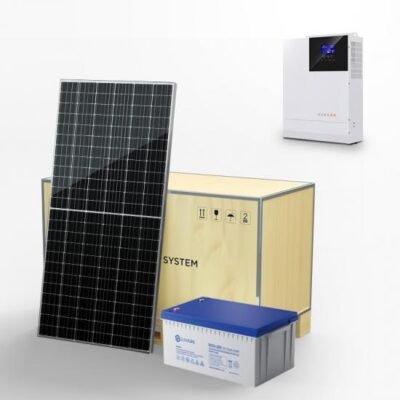
Solar AC System Residential Hybrid Air Conditioner With Solar Panels
Solar AC, also known as solar air conditioning, refers to an air conditioning system that utilizes solar energy to power its operation. Traditional air conditioning systems rely on electricity from the power grid, which is typically generated using fossil fuels. In contrast, solar AC systems harness the power of the sun to produce electricity, reducing reliance on non-renewable energy sources and minimizing environmental impact.
- Solar panel voltage:DC90-380V
- Maximum Solar Charging Current:15A
- AC Power Connected:180-240V(50/60Hz)
- Refrigerant:R32
- Compressor:GMCC DC Drive Mode Rolling Rotor Type
- Connection:Flare
- Product categories
how can we help you
Description

A solar AC system generally consists of solar panels (photovoltaic modules) that convert sunlight into electricity, an inverter that converts the direct current (DC) generated by the solar panels into alternating current (AC) used by the air conditioning unit, and the air conditioning unit itself. The solar panels capture sunlight and generate electricity, which is either used directly to power the AC unit, stored in batteries for later use, or fed back into the main power grid.
Solar AC systems can be designed to power various types of air conditioning units, including central air conditioning systems for large buildings or residential homes, as well as smaller-scale units such as portable or window air conditioners. They offer the advantage of reducing electricity costs and reliance on the grid, especially in regions with abundant sunlight.
It’s worth noting that solar AC systems are more commonly used for cooling purposes. Cooling typically requires a significant amount of energy, making it more challenging to solely rely on solar power for heating and cooling. In situations where heating is also required, a combination of solar panels and conventional heating methods may be employed.

Here are some of the advantages of using solar-powered air conditioner units in your home:
1.They are environmentally friendly
2.They are easy to install
3.They reduce your Carbon Footprint
4.They are cheaper than traditional units
5.They’re cost-effective on your monthly electric bill
Solar-power air conditioners are a great way to save money on utility bills, while also helping the environment.

A solar air conditioner, also known as a solar-powered air conditioner or photovoltaic air conditioner, utilizes solar energy to power its cooling system. The working principle of a solar air conditioner is similar to that of a conventional air conditioner, with the main difference being the power source.
Here is a simplified explanation of the working principle:
1.Solar Panels: The system consists of solar panels that are installed on the rooftop or in an area with ample sunlight exposure. These panels contain photovoltaic cells that convert sunlight into electricity.
2.Electrical Conversion: The produced DC (direct current) electricity from the solar panels is then converted into AC (alternating current) using an inverter. This AC electricity is used to power the air conditioning system.
3.Compressor and Refrigerant: Like traditional air conditioners, a solar air conditioner relies on a compressor and a refrigerant to cool the air. The compressor compresses the refrigerant gas, which raises its temperature and pressure.
4.Heat Exchange: The hot, high-pressure refrigerant gas is then passed through a heat exchanger or condenser. Here, it releases heat to the surrounding environment, leading to condensation and the conversion of the refrigerant into a high-pressure liquid.
5.Expansion Valve: The high-pressure liquid refrigerant then passes through an expansion valve, which reduces its pressure and temperature. This causes the refrigerant to evaporate and absorb heat from the surrounding air.
6.Evaporator: The now low-pressure, low-temperature refrigerant gas enters the evaporator, where it absorbs heat from the indoor air, thereby cooling it down. The cooled air is distributed through the air conditioning system’s vents to cool the room.
7.Cycle Continuation: The cooled refrigerant gas is then returned to the compressor to repeat the cycle and maintain the desired temperature in the room.
In a solar air conditioner, the electricity required to power the compressor and other components comes from the solar panels, thus reducing the reliance on the electrical grid and lowering energy costs. It is an environmentally friendly and energy-efficient alternative to conventional air conditioning systems, as it utilizes clean, renewable solar energy.
FAQs:
Q1: Do you support OEM/ODM?
A:Definitely, OEM&ODM service is supported with a certain quantity,including customize logo,package and label;
Q2: What’s the production time?
A: The production time is normally 15 working days. but we will always prepare some stocks for popular models.
Q3: Can you provide DDP service?
A:Yes, if you are a personal customer and don’t want to deal with the customs, we can provide DDP service to your address.
Q4: What about the warranty and how to claim?
A: Warranty period are 5 years since you receive the product, our professional after-sales team will deal with all warranty issues.
Related Tags:
Leave A Message
If you are interested in our products and want to know more details,please leave a message here,we will reply you as soon as we can.
Subject :







